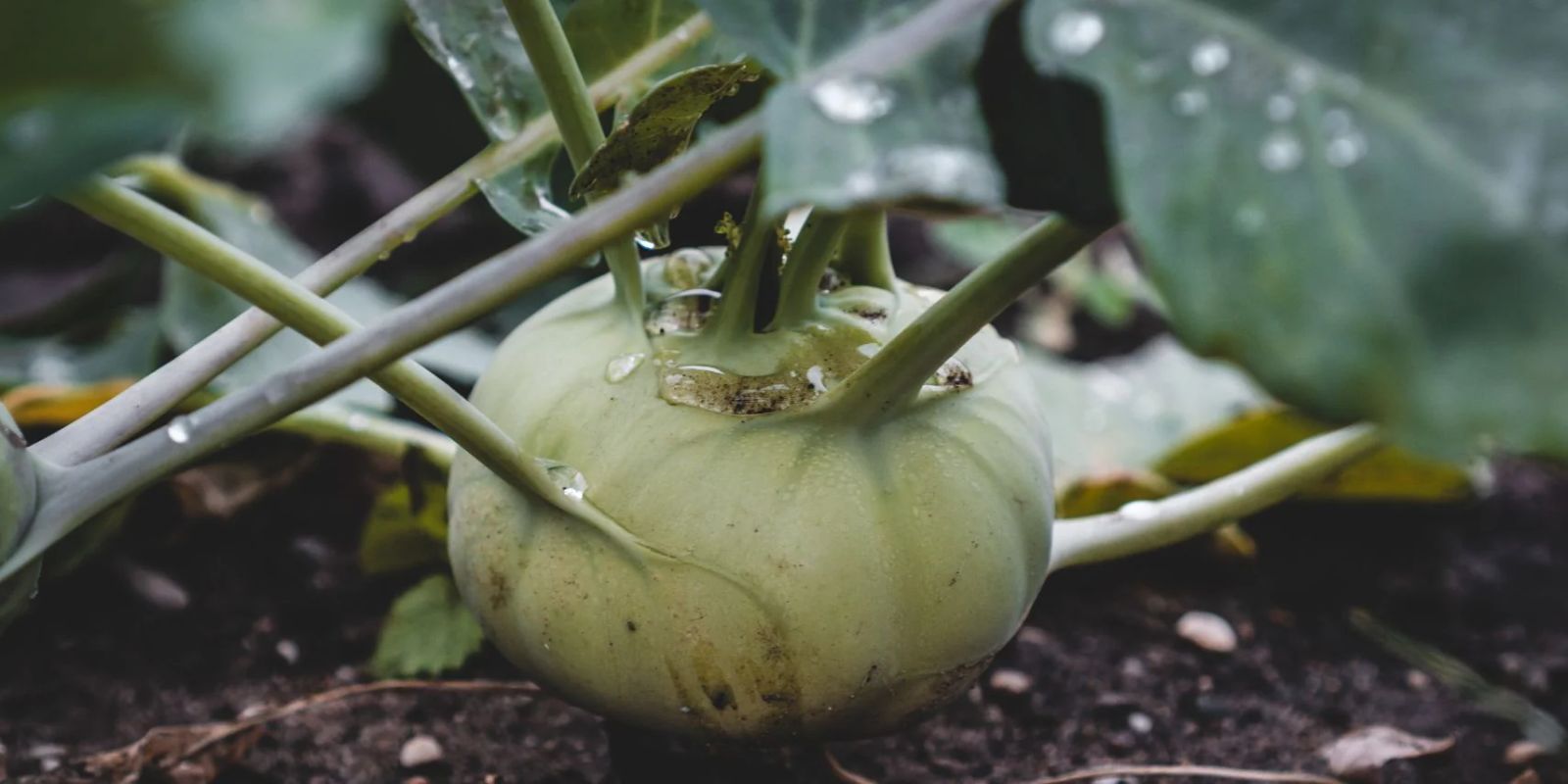Kohlrabi, also known as the turnip cabbage, is a unique and nutritious vegetable that’s gaining popularity in gardens worldwide. With its crisp texture and mild flavor, it’s a versatile addition to salads, soups, and stir-fries. Growing kohlrabi from seed can be a rewarding experience, but it requires careful planning and attention to detail. In this article, we’ll explore eight essential tactics to help you grow healthy kohlrabi from seed, ensuring a bountiful harvest.
1. Choose Quality Seeds
The journey to a successful kohlrabi crop begins with selecting high-quality seeds. Opt for seeds from a reputable supplier to ensure you’re starting with reliable, disease-resistant varieties. There are different cultivars available, so choose one that suits your growing conditions and flavor preferences. For instance, ‘Early White Vienna’ is a popular variety known for its tender texture and mild taste.
2. Prepare the Soil
Kohlrabi thrives in well-draining, fertile soil. Start by preparing the soil in your garden bed or containers. The ideal soil pH for kohlrabi is between 6.0 and 7.0. Test your soil to ensure it falls within this range. If your soil is too acidic, you can amend it with lime; if it’s too alkaline, adding sulfur can help. Enrich the soil with organic compost to boost fertility and improve soil structure. This will provide the necessary nutrients for robust plant growth.
3. Sow Seeds Indoors
To get a jump start on the growing season, sow kohlrabi seeds indoors 6-8 weeks before the last expected frost. Use seed trays or small pots filled with seed-starting mix. Plant the seeds about ½ inch deep and water them gently. Place the trays in a warm location with good light, or use grow lights if natural light is insufficient. Maintaining the soil temperature between 70-75°F (21-24°C) will encourage successful germination.
4. Maintain Optimal Temperature
Temperature plays a crucial role in seed germination and seedling development. Kohlrabi seeds require a consistent temperature to sprout and grow effectively. Avoid placing your seed trays in drafty or fluctuating temperature areas. A seedling heat mat can help maintain a steady temperature if you’re starting seeds indoors during cooler months. Once seedlings emerge, they should be exposed to cooler temperatures around 60-65°F (15-18°C) to encourage strong, sturdy growth.
5. Provide Adequate Light
Proper lighting is essential for healthy seedling development. Kohlrabi seedlings need plenty of light to grow strong and avoid becoming leggy. Place the seed trays in a sunny window where they can receive at least 6-8 hours of direct sunlight per day. If natural light is inadequate, use fluorescent grow lights or LED grow lights. Position the lights about 2-4 inches above the seedlings, adjusting as they grow to maintain optimal light intensity.
6. Transplant Carefully
Once your kohlrabi seedlings have developed at least two true leaves and the risk of frost has passed, it’s time to transplant them outdoors. Harden off the seedlings by gradually exposing them to outdoor conditions over a week. Choose a planting site with well-draining soil and adequate sunlight. Space the seedlings 6-8 inches apart to allow for proper growth and air circulation. Dig holes slightly larger than the root ball of each seedling, place them in the holes, and gently firm the soil around them.
7. Space Plants Properly
Proper spacing is crucial for healthy kohlrabi plants. Overcrowded plants can compete for nutrients, water, and light, leading to poor growth and increased susceptibility to diseases. Ensure that each kohlrabi plant has enough space to develop its bulb and leaves. Space the plants 6-8 inches apart in rows that are 12-18 inches apart. This spacing allows for ample air circulation, reducing the risk of fungal diseases and promoting even growth.
8. Water and Fertilize
Kohlrabi requires consistent moisture to grow well. Keep the soil evenly moist but not waterlogged. Water the plants regularly, especially during dry spells, and avoid getting the leaves wet to prevent fungal issues. Applying a layer of mulch around the plants can help retain soil moisture and regulate temperature. Fertilize kohlrabi every 4-6 weeks with a balanced fertilizer or a compost tea to provide essential nutrients. Avoid high-nitrogen fertilizers, as they can lead to excessive leaf growth at the expense of bulb development.
Conclusion
Growing kohlrabi from seed can be a fulfilling experience that yields a delicious and nutritious vegetable. By following these eight must-know tactics—choosing quality seeds, preparing the soil, sowing indoors, maintaining optimal temperatures, providing adequate light, transplanting carefully, spacing properly, and watering and fertilizing—you’ll be well on your way to a successful kohlrabi harvest. Embrace the process, and enjoy the crisp, mild flavor of homegrown kohlrabi in your meals. Happy gardening!
Motivation: Ready to grow your own kohlrabi and enjoy its crisp texture? Follow these steps and watch your garden flourish! 🌱🥦 #GrowKohlrabi #HomeGardening #VegetableGarden #GardenTips #DIYGarden #UrbanFarming #HealthyEating

